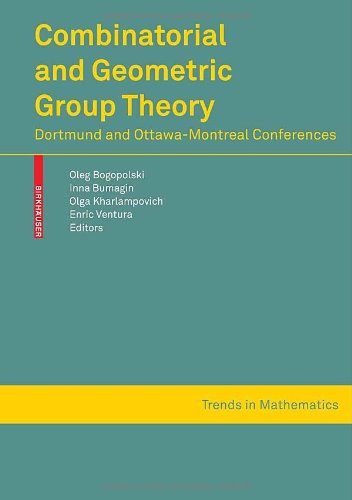

Most ebook files are in PDF format, so you can easily read them using various software such as Foxit Reader or directly on the Google Chrome browser.
Some ebook files are released by publishers in other formats such as .awz, .mobi, .epub, .fb2, etc. You may need to install specific software to read these formats on mobile/PC, such as Calibre.
Please read the tutorial at this link: https://ebookbell.com/faq
We offer FREE conversion to the popular formats you request; however, this may take some time. Therefore, right after payment, please email us, and we will try to provide the service as quickly as possible.
For some exceptional file formats or broken links (if any), please refrain from opening any disputes. Instead, email us first, and we will try to assist within a maximum of 6 hours.
EbookBell Team

4.3
28 reviews

ISBN 10: 3764399104
ISBN 13: 978-3764399108
Author: Oleg Bogopolski, Inna Bumagin, Olga Kharlampovich, Enric Ventura
The paper by O. Bogopolski and A. Vikentiev describes some particularly useful finite-index subgroups of the automorphism group of a finitely generated free group. One of their applications may be in addressing the problem of Kazhdan’s property (T) for these groups.
The paper by A. Juhász presents a solution to the difficult membership problem in a subclass of one-relator groups.
The papers by F. Matucci, D. Savchuk, and R. Zarzycki will attract the attention of readers interested in groups of transformations of the unit interval (0, 1], particularly in the famous Thompson’s group F and its limit properties.
The paper by A. J. Duncan, V. Diekert, and A. G. Myasnikov contains a thorough survey on rewriting systems, including new developments in infinite rewriting systems.
The paper by L. Frenkel, A. G. Myasnikov, and V. N. Remeslennikov is devoted to the problem of measuring subsets in free groups using random walks. The results may be useful for designing algorithms that perform efficiently on most inputs. This paper, along with the paper by M. Hock and B. Tsaban, is highly recommended for specialists in cryptography.
Finally, the paper by D. Gonçalves and P. Wong focuses on twisted conjugacy in 2-dimensional crystallographic groups.
combinatorial and geometric group theory
what is group theory in mathematics
group theory explained
what is abelian group in mathematics
group theory vs set theory
Tags: Oleg Bogopolski, Inna Bumagin, Olga Kharlampovich, Enric Ventura, Combinatorial, Geometric, Group Theory, Dortmund, Ottawa, Montreal, Conferences